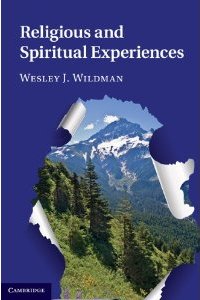 Overview
Overview
This book offers an interpretation of a diverse variety of religious and spiritual experiences, from the mundane to the shocking, from the terrifying to the sublime, and from the common to the exceptionally unusual. It carefully describes these experiences and offers a novel classification based on their neurological features and their internal qualities. The book avoids the reductionistic oversimplifications so common in both religious and scientific literatures, and instead synthesizes perspectives from many disciplines into a compelling account of the meaning and value of religious and spiritual experiences in human life. The resulting interpretation does not assume a supernatural worldview, nor does it reject such experiences as totally delusory. Rather, the book frames religious and spiritual experiences as contributing to a spiritually positive affirmation of this-worldly existence. Along the way, the book directly addresses key intellectual and practical questions in a philosophically sound and scientifically informed way. For example, can we trust the apparent meaning of such experiences? What is the value of religious and spiritual experiences within human life? Are we evolutionarily programmed to have such experiences? How will emerging technologies change such experiences in the future?
Distinctive Features
Religious and Spiritual Experiences has a number of distinctive features.
- The novel typology of religious and spiritual experiences helps readers grasp the diversity and shared aspects of these experiences.
- The richly multidisciplinary approach, embracing the sciences and philosophy and theology, demonstrates how multiple insights can converge on a compelling and unified interpretation.
- The inclusion of neuroscience perspectives (accompanied by a critique of hasty interpretations) assists readers in reappraising the importance of the neurosciences and properly situating their findings in a wider scheme of interpretation.
- The rejection of extreme interpretations (such as supernaturalism that privileges one religion or complete rejection of the value of religious and spiritual experiences) points the way to an appreciation of religious and spiritual experiences as meaningful and useful this-worldly features of human life.
- Directly addressing vital practical but theoretically complex questions aids the readers’ grasp of the subject matter and its relevance to their lives.
Table of Contents
Preface and Acknowledgements
Chapter 1. Exploring a Strange yet Familiar Landscape: A Strategy for Interpreting Religious and Spiritual Experiences
Introduction
Motivating Concerns
Theoretical Issues
Conclusion
Chapter 2. Spirituality and the Brain: A Revolutionary Scientific Approach to Religious and Spiritual Experiences
Introduction
History of Thought about Spirituality and the Brain
Evidence for the Neural Mediation Hypothesis
Problems Facing the Neuroscience of Religious and Spiritual Experiences
Creative Responses
Conclusion
Chapter 3. A Smorgasbord of Dangers and Delights: The Phenomenology of Religious and Spiritual Experiences
Introduction
Mapping the Terrain of Religious and Spiritual Experiences
Basic Distinctions in the Map
Exploring Shared Territory in More Detail
Conclusion
Chapter 4. Gateway to Ultimacy: The Importance of Intense Experiences
Introduction
Immediate Responses to Intense Experiences
Five Core Features of Intense Experiences
The Faces, Functions, and Cognitive Value of Intense Experiences
Evolution and the Neurology of Intense Experiences
Conclusion
Chapter 5. Can You Trust Your Instincts? The Cognitive Reliability of Religious and Spiritual Experiences
Introduction
Deepening the Reliability Question
The Perception Analogy
An Ecological-Semiotic Theory of Dynamic Engagement
The Reliability of Religious Perceptual Engagement
Conclusion
Chapter 6. The Brain-Group Nexus: The Social Power of Religious and Spiritual Experiences
Introduction
A Dynamical Systems Approach to the Brain-Group Nexus
Describing All Equilibrium Social Arrangements since the Neolithic
Evolutionary Origins of the Pre-Neolithic Equilibrium
Behind the Ideological Curtain
Conclusion
Chapter 7. Make it Start, Make it Stop! Religious and Spiritual Experiences in the Future
Introduction
Past Technologies, Transformed in the Present, Hurtling into the Future
Unprecedented Technologies
Conclusion
Chapter 8. Brains in Bodies, Persons in Groups, and Religion in Nature: An Integrative Interpretation of Religious and Spiritual Experiences
Introduction
Five Key Controversies
Five Key Affirmations
Conclusion
Glossary of Key Terms
Works Cited
